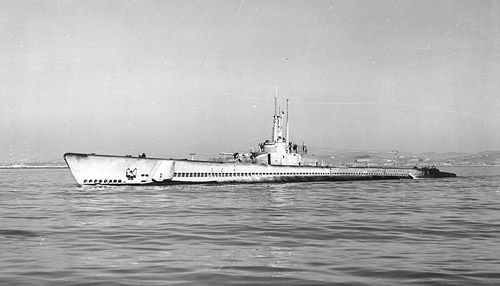Balao-class
Summary
| Origin country | 🇺🇸 United States |
| Category | Submarine |
| Subtype | Attack submarine (World War II) |
| Manufacturer | Portsmouth Naval Shipyard, Cramp Shipbuilding Company, Mare Island Naval Shipyard, Electric Boat Company, Manitowoc Shipbuilding Company |
| Year commissioned | 1943 |
Description
USS Balao (SS/AGSS-285) served as the lead ship of the Balao-class submarines in the United States Navy during World War II. Commissioned in 1943, it was named after the balao, a type of small schooling marine fish. The keel was laid down on June 26, 1942, in Kittery, Maine, and the vessel was launched on October 27, 1942. After training, the submarine joined the Pacific Fleet and began its service in the Pacific Theater of Operations.
During its first patrol, Balao encountered minimal enemy activity and did not launch any successful attacks. Its second patrol, in October and November of 1943, resulted in a more fruitful engagement. Balao cooperated with Silversides in an assault on a convoy, claiming hits on several ships. Consecutive patrols followed, with varying degrees of success in tracking enemy vessels and engaging convoys.
Balao's fourth patrol in early 1944 marked its first confirmed kill, as it was able to verify the sinking of the Nikki Maru. Subsequent patrols resulted in more sunk enemy ships and several engagements with Japanese vessels, although not all attacks resulted in confirmed kills. Despite mechanical issues and some targets evading destruction, Balao's months of operation in enemy-controlled waters contributed to the Allies' efforts in the Pacific.
After the conclusion of World War II, Balao received nine battle stars for its service. Following the conflict, the submarine underwent a period of decommissioning before being recommissioned in 1952. Throughout the 1950s and early 1960s, it served in training capacities and was involved in various operations, including goodwill visits, antisubmarine warfare training, and participation in exercises with other navies.
In 1960, Balao was reclassified as an auxiliary submarine and continued to be used as a training vessel, taking part in the Cuban Missile Crisis. The submarine's service officially ended in 1963 when it was determined unfit for further purpose and subsequently decommissioned, its hulk sunk as a target off the coast of Florida later that year. The conning tower and periscope shears were preserved and are displayed at the Washington Navy Yard in Washington, D.C.
Technical specifications
| Balao | |
|---|---|
| Displacement | 1550 tons |
| Displacement submerged | 2463 tons |
| Range | 20000 km at 10 knots |
| Endurance | 48 hours at 2 knots submerged |
| Crew | 80 members |
| Width | 8.31 m (27.3 ft) |
| Length | 95.02 m (311.7 ft) |
| Max. depth | 120 m (393.7 ft) |
| Propulsion | 4 Fairbanks-Morse diesels with a power of 5,400 hp each + 4 electric motors with a power of 2,740 hp each - 2 propellers |
| Armament | 6 front torpedo tubes + 4 rear torpedo tubes + 24 torpedoes in storage + 1 40mm Bofors gun + 1 20mm AA gun |
| Maximum speed | 20 knots |
| Max. speed submerged | 9 knots |
Photo of Balao class

Silhouette
